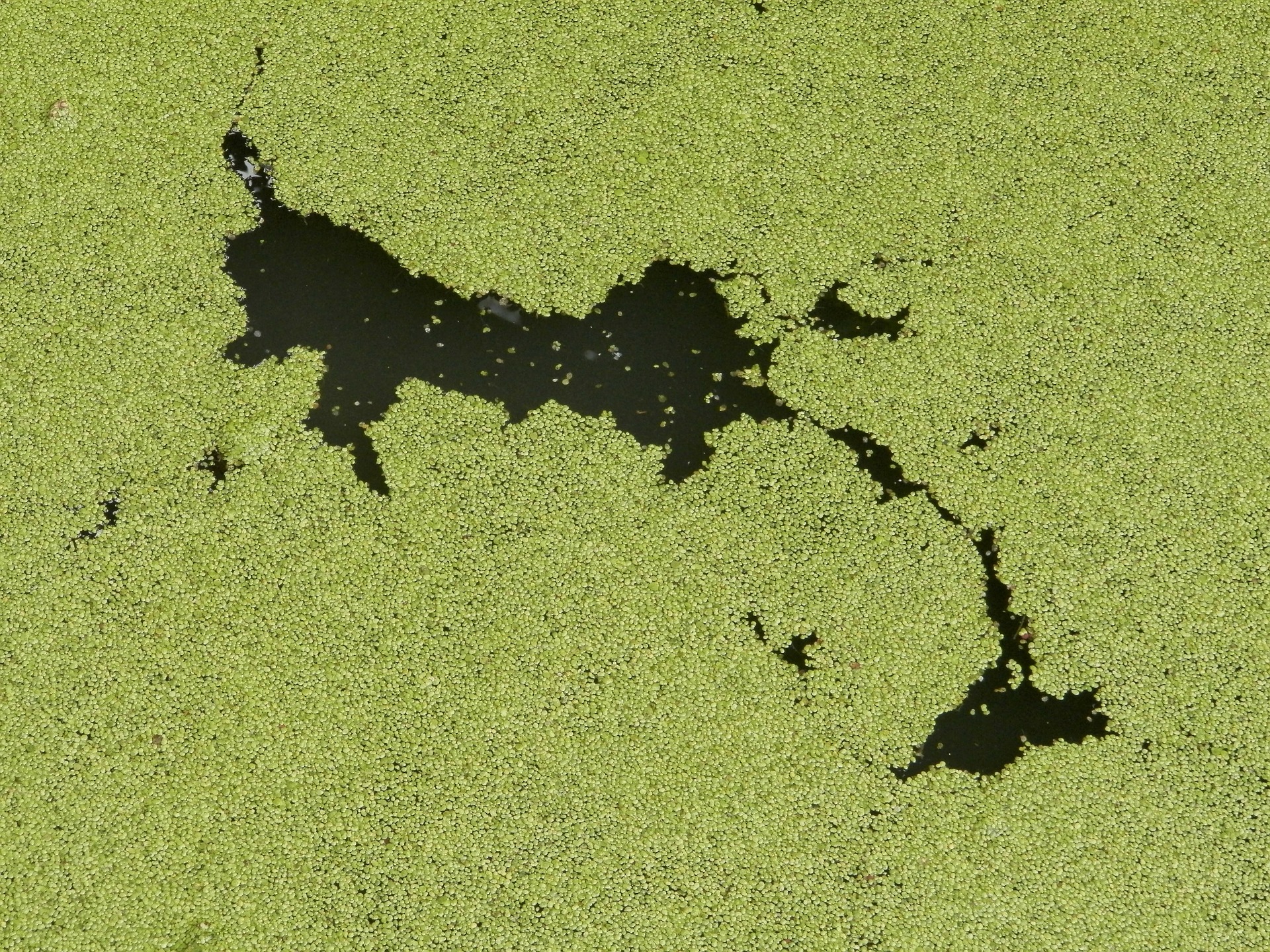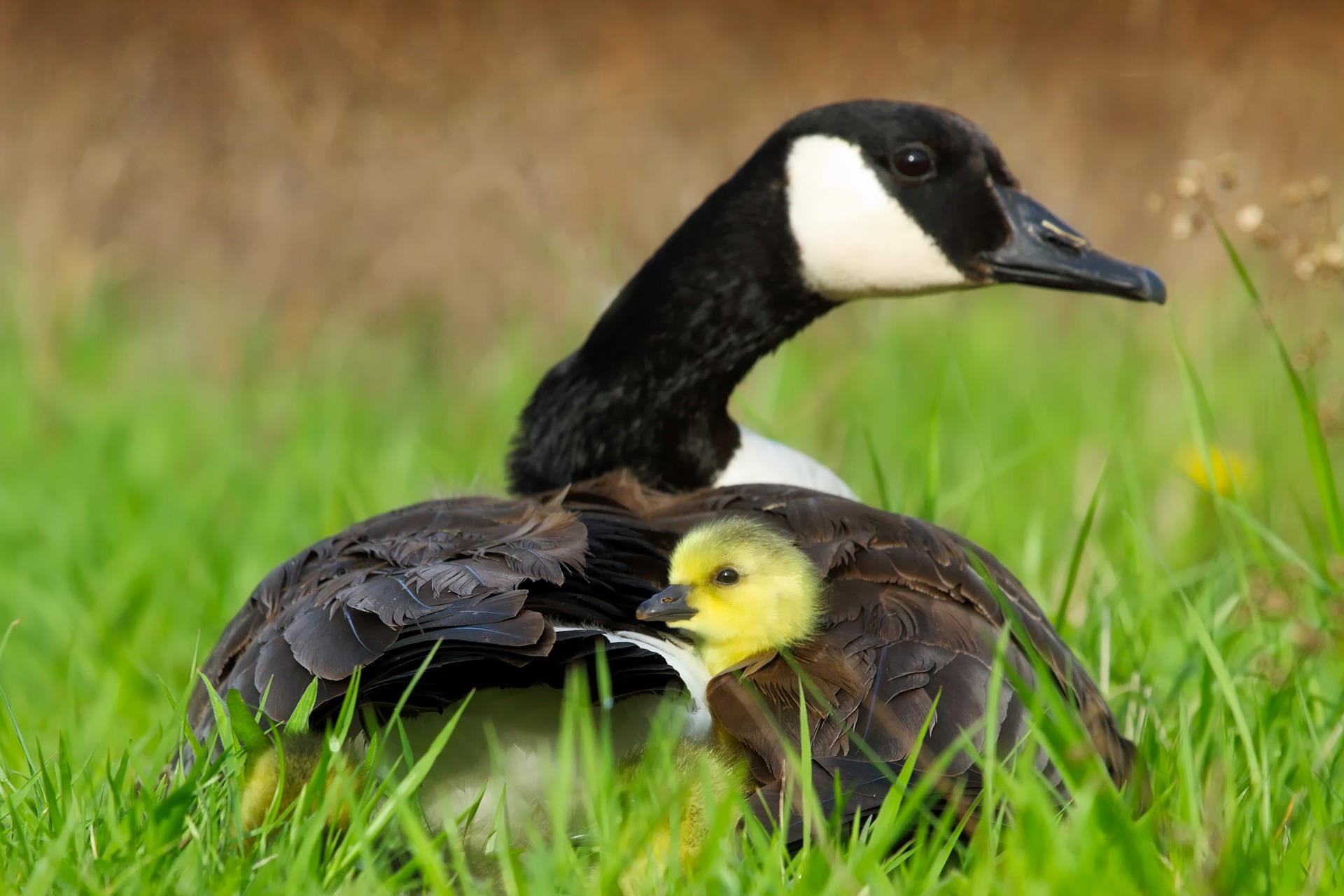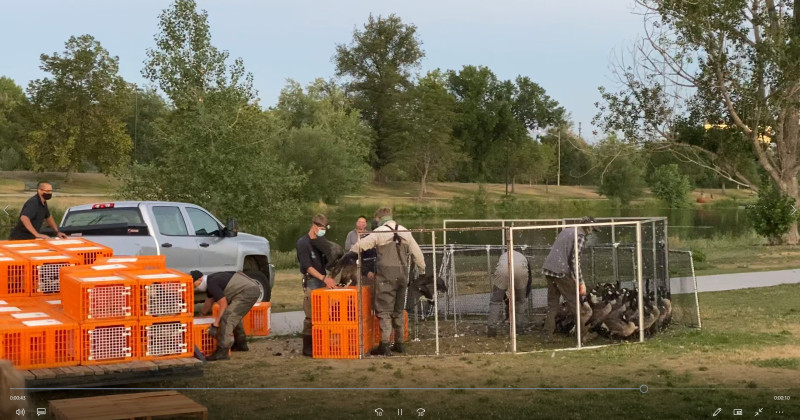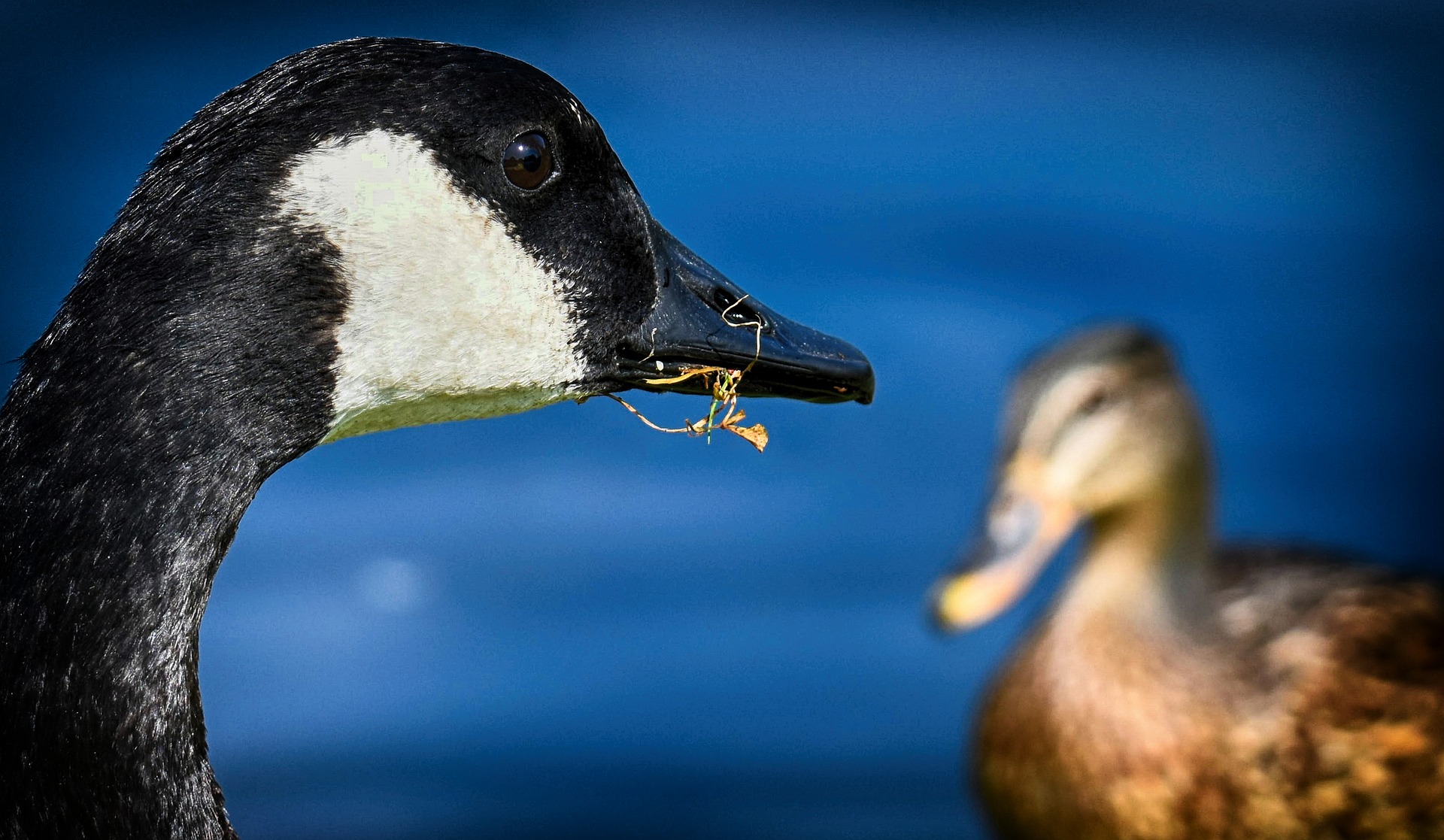The Truth About Goose Poop and Brutal Goose Massacres
Sadly, geese are often blamed and killed for misunderstandings about their biology and behavior. Thousands of geese are brutally murdered each year across the nation because of misinformation and a lack of education concerning their poop. Millions of taxpayer dollars are spent to cruelly slaughter geese when nonlethal, long-term solutions are more effective, kind, and cost less over time. Read on to get the scoop about goose poop!
1. Does goose poop cause E. coli and algae blooms in waterways?
Truth: Goose poop is not to blame for contaminating our water.
DNA tests strongly indicate that goose poop is not to blame for harmful bacteria found in our waterways.
According to avian expert Eva Ries, waterfowl like geese are not the source of the majority of bacteria like E.coli., Ries rightfully calls out officials who blame geese for bacterial overloads in our waterways when testing indicates humans are responsible for the majority of E. coli bacteria in our waterways.
"To call geese feces unhealthy and unsafe is one of the most unprofessional and biased pieces of sensationalist ‘journalism’ I've seen. Stop lying to the public about the real reason this (roundup) was done - INTOLERANCE - and not for any scientific or public health reasons. It's time to be honest about why humans are habitually extirpating, persecuting, and eliminating other species. We are intolerant and violent towards other species deemed ‘in our way’ or ‘pests’ for sociological reasons.”

Extensive studies of E. coli contamination in the Great Lakes region demonstrated that these bacteria live in the sand beneath where people congregate. E. coli overload is more likely from people and dogs, rather than from geese.
Harvard School of Public Health Professor Dr. Timothy Ford asserts that harmful microbes in drinking water have also been wrongly attributed to geese. “There is no possibility that the Canada goose will ever be a major route of infection. To suggest otherwise is utterly ludicrous and you can quote me."
The Center for Disease Control reports the number one cause of algal blooms is in fact global warming.
2. Isn’t goose flesh from roundups given to food pantries so it’s not wasted?
Truth: Most food pantries won’t accept toxic goose flesh.
Sadly, the slaughtered bodies of most geese often wind up in landfills. Only a very small fraction of slaughtered geese are donated since there is no demand for toxic goose meat. The flesh of resident urban geese is tainted with toxic pesticides (Round-up) and algae-cides (Cutrine Plus), which are applied to vegetation and dumped into waterways. This is why credible food banks and homeless shelters won’t accept goose meat.

Contaminations are virtually guaranteed to occur where wild Canada geese are slaughtered and ground-up using the same machines that are also used to process meat from farmed animals. Meat grinders are notoriously hard to clean and disinfect. Unexplained occasional human deaths from bacterial infections may be linked to consuming products from a contaminated facility.
3. How difficult and expensive is it to clean goose poop?
Truth: Goose poop complaints can easily be remedied.
There are excellent community options for clean-up programs by volunteers and as a community service for minor offenses. An excellent fertilizer, goose droppings can also be processed, packaged, and sold to help fund humane goose management programs.
Your community can also purchase a goose poop clean-up machine, which could be rented out and shared with adjacent communities to recoup some of the cost. Here is one option for the Tow and Collect series. A handy mechanic could devise one for your community!
4. Aren’t goose roundups humane?
Truth: Goose roundups are traumatic and painful.
The most common form of goose execution is gassing with carbon dioxide. Roundups typically occur in the summer while the birds are molting and unable to fly while their new feathers grow in. Geese may also be baited with food for several days and then trapped with a rocket net (at any time of year). Geese are often captured in pre-dawn hours so the workers are not interrupted by the public. These dates are also kept secret to avoid interference.

If the geese are on the water, they are driven by kayaks or other small boats to the shore, where they are herded into portable pens. They are roughly handled, often grabbed by their wings, crammed into crates, and piled one on top of another. Family is very important to geese. During roundups, they are separated from mates and offspring, desperately calling out for each other. Then, they are trucked off to be gassed at another location.
For smaller groups of geese, mini-gas chambers are placed onto the backs of trucks and brought directly to the roundup site.
Geese are loaded into chambers one at a time until several are inside and the gas is turned on. Witnesses report hearing the panicked and terrified birds banging and thumping, desperately to escape the death chamber while they slowly suffocate.
Gassing is a horrible, painful, and excruciatingly long process that was never intended for geese.
Geese have chemical receptors that are acutely sensitive to carbon dioxide. Their unique adaptations allow them to dabble for long periods underwater for food and also to fly at high altitudes where the air is thin.
The gassing process simultaneously burns and freezes their lungs for up to 45 minutes before their so-called "humane" death. Gassing is totally inappropriate for geese who can hold their breath for prolonged periods.
Although carbon dioxide is approved by the American Veterinary Medical Association (which also approves of grinding live male boy chicks and spent hens in a wood chipper), this gas is used to exterminate geese en masse because it is cheap. There is nothing remotely humane about it.
5. But at least goose roundups are an effective solution, right?
Truth: Roundups must be repeated each year because they don’t work.
Resident Canada geese have been rounded up since the early 1970's. The number of requested roundup permits has continued to increase, which indicates that roundups are not an effective method of management. You can combat roundups in your community by asking decision-makers to provide proof that killing geese is a successful long- term solution.
The Department of Natural Resources acknowledges the failure of goose roundups and reports that geese often return just weeks after a roundup has occurred. The department’s website states: “Roundup is not an effective long-term solution for addressing Canada goose conflicts and has had limited success in reducing the number of goose complaints.”
Within a few weeks of a roundup, new geese will replace those slaughtered. Just five short weeks after a roundup of 50 geese in Brookville Park, near John F. Kennedy International Airport, news reports found over 40 new geese taking up residence. Without changing what attracts geese to the location, such as abundant food, water, and safe harbor, geese will continue to flock there. If killing geese effectively reduced the population in the area, there would be no need to renew killing contracts and they would not be repeated on an annual basis.
Bergen County, New Jersey found nonlethal methods so effective that the Bergen County Freeholders passed a resolution against the killing of Canada Geese, ending a long community battle over managing geese populations by killing geese. Unlike lethal management, humane goose management addresses the root cause of goose overpopulation.

Financial Incentives for Goose Roundups
Exterminating geese is no small business. Killing contracts with the United States Department of Agriculture’s Wildlife Services Division and statewide Departments of Natural Resources amount to millions of dollars per year. Most contracts are easily renewed each year, so the financial investment in lethal goose management increases exponentially over time. Journalist and goose advocate Mary Lou Simms discloses the tremendous waste of innocent animal lives and of taxpayer money on goose roundups that don’t work in this investigative news article.
The cost of geese slaughters varies by location. They can range from $6,500 in Delafield, Wisconsin to $347,000 for a three-year geese management contract in Union County, New Jersey. Companies that roundup and kill geese often make $75 per bird, but this figure varies. In British Columbia, the Capital Regional District spent more than $31,000 in 2015 on a goose roundup in Victoria to kill 43 birds — that’s $725 a goose.
The size and scope of killing contracts are beyond belief. Killing contracts exist in 48 states and have become a stable source of income for state agencies at the cost of taxpayers and animals.
Financial details are available via the Freedom of Information Act (FOIA), which allows public access to federal records. Anyone can request a FOIA to find out the number of geese who were rounded up, whether they were killed or dispersed, how much it cost, and what agency received the funds. You can find sample letters and video instructions to submit a FOIA request in your community online. This information can help convince your community to terminate their expensive roundup plans.
The truth above were adapted with permission from Courtney DeWinter for her presentation in Denver, Colorado.
What You Can Do To Protect Geese
- Become an IDA member by donating today
- Learn how to protect geese within your community
- Educate yourself and others about the truth behind goose roundups
- Share our Humane Goose Management Guide with your community leaders
- Contact us for help to prevent or stop a goose roundup in your community
- Take action for geese by signing one of our urgent alerts

